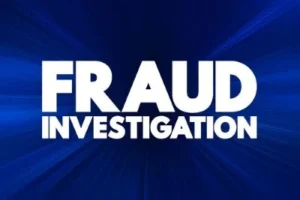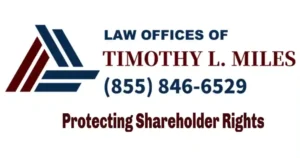Introduction to the Tempus AI Class Action Lawsuit
If you suffered substantial losses and wish to serve as lead plaintiff of the Tempus AI class action lawsuit, or just have general questions about you rights as a shareholder, please contact attorney Timothy L. Miles of the Law Offices of Timothy L. Miles, at no cost, by calling 855/846-6529 or via e-mail at [email protected]. Lead plaintiff motions for the Tempus AI lawsuit must be filed with the court no later than August 12, 2025.
1. What Is the Securities Act Of 1933?
The Securities Act of 1933, often referred to as the “truth in securities” law, was enacted by the United States Congress following the stock market crash of 1929 and during the Great Depression. Its primary objective is to ensure transparency in financial statements so that investors can make informed decisions about securities being offered for public sale.
The act mandates that companies provide comprehensive and accurate information about their financial health and the risks associated with their securities. This was a significant shift towards greater accountability and aimed to restore investor confidence in the financial markets.
One of the key provisions of the Securities Act of 1933 is the requirement for companies to register their securities with the Securities and Exchange Commission (SEC) before they can be sold to the public. This registration process involves disclosing detailed information through a prospectus, which includes financial statements, details about the company’s management, and other pertinent information.
The SEC reviews these documents to ensure that all necessary information is disclosed and that it is presented in a clear and understandable manner.

Moreover, the act provides a legal framework for taking action against fraudulent activities in the securities market. For instance, if investors suffer losses due to misleading statements or omissions in the registration statement, they can file lawsuits, such as a Tempus AI class action lawsuit, to seek redress.
This provision serves as a deterrent against corporate fraud and misrepresentation that lead to suits such as the Tempus AI lawsuit, thereby protecting investors’ interests.
In essence, the Securities Act of 1933 plays a crucial role in maintaining market integrity and protecting investors. By demanding transparency and accountability from companies, it helps to foster a more stable and trustworthy financial environment. As such, it remains a cornerstone of U.S. securities regulation, ensuring that investors have access to reliable information before making investment decisions.
2. What Is the Securities Exchange Act of 1934?
The Securities Exchange Act of 1934 is a foundational piece of legislation in the United States that governs the secondary trading of securities, such as stocks and bonds. Enacted on June 6, 1934, this act was designed to provide greater financial transparency and integrity in the marketplace. The act established the SEC, which is responsible for enforcing federal securities laws, regulating the securities industry, and protecting investors. One of its critical functions is to ensure that companies provide accurate and complete information to the public, thereby reducing fraud and insider trading.
The Securities Exchange Act of 1934 requires public companies to regularly disclose financial statements and other significant information, which helps investors make informed decisions. This transparency is crucial for maintaining trust in the financial markets.
Additionally, the act regulates activities such as proxy solicitations and tender offers, and it lays out the legal framework for dealing with issues like market manipulation.
In recent years, the act has also played a role in class action lawsuits related to securities fraud. For instance, cases like the Tempus AI class action lawsuit highlight how the SEC’s regulations can be enforced through legal channels to protect investors’ interests.
By providing a mechanism for holding companies accountable, the Securities Exchange Act of 1934 continues to be a cornerstone of financial regulation in the United States.
Overall, the Securities Exchange Act of 1934 has had a profound impact on the financial industry by promoting fairness, transparency, and accountability. Whether it’s through regulatory oversight or legal actions such as the Tempus AI class action lawsuit, this legislation remains vital in safeguarding investor confidence and ensuring the smooth operation of financial markets.
3. What Is the Sarbanes-Oxley Act of 2002?
The Sarbanes-Oxley Act of 2002, also known as SOX, is a pivotal piece of legislation that was enacted in response to the financial scandals of the early 2000s, including the infamous cases of Enron and WorldCom. Designed to protect investors by improving the accuracy and reliability of corporate disclosures, SOX introduced major changes to the regulation of financial practices and corporate governance.
The Act mandated strict reforms to enhance transparency in financial reporting by corporations and enforced stricter penalties for fraudulent financial activity to prevent cases like the Tempus AI class action lawsuit. Among its key provisions, SOX requires top management to certify the accuracy of financial information and mandates enhanced internal controls and procedures for financial reporting.

One notable aspect of the Sarbanes-Oxley Act is its establishment of the Public Company Accounting Oversight Board (PCAOB), which oversees the audits of public companies to protect investors’ interests and ensure the preparation of informative, fair, and independent audit reports.
Additionally, SOX has provisions that address conflicts of interest by prohibiting certain types of personal loans to executives and requiring disclosures about off-balance-sheet transactions. The Act also includes protections for whistleblowers, ensuring that employees who report fraudulent activities are safeguarded from retaliation.
The significance of SOX can be underscored by its impact on corporate behavior and governance. It has led to increased accountability among corporate executives and has instilled greater confidence in the financial statements issued by public companies.
Despite criticisms regarding its compliance costs, the Sarbanes-Oxley Act remains a cornerstone in the landscape of U.S. corporate regulation, reflecting a commitment to upholding integrity in financial markets and preventing many cases like the Tempus AI lawsuit.
It is worth noting that lawsuits like the Tempus AI lawsuit highlight ongoing challenges in maintaining corporate compliance with SOX’s rigorous standards. As businesses navigate these regulations, they must remain vigilant in their adherence to ethical practices and financial transparency.
4.What Is the the Private Securities Litigation Reform Act?
The Private Securities Litigation Reform Act (PSLRA), passed by the United States Congress in 1995, is a pivotal piece of legislation designed to curb frivolous or unwarranted securities lawsuits. The PSLRA was enacted in response to concerns that the sheer volume and frequency of class-action lawsuits were imposing significant financial and reputational burdens on companies, often without sufficient merit.
One of the primary objectives of the PSLRA is to enhance the quality of securities litigation by implementing stricter procedural and substantive requirements for plaintiffs. This includes heightened pleading standards, which necessitate that plaintiffs provide specific facts demonstrating that defendants acted with intent to deceive, manipulate, or defraud investors.
The PSLRA also introduced a “safe harbor” provision for forward-looking statements, which protects companies from liability for projections or forecasts that prove inaccurate, as long as these statements were made with appropriate cautionary language. This provision encourages companies to share their future plans and expectations without the constant fear of litigation.
Another significant aspect of the PSLRA is its lead plaintiff provision, which aims to ensure that the most capable and motivated plaintiffs—often institutional investors with substantial stakes—take charge of class-action lawsuits. This helps align the interests of the plaintiffs with those of the larger class of investors.
In the context of a Tempus AI class action lawsuit, the PSLRA’s regulations would play a crucial role in determining how the case progresses. For instance, any allegations made against Tempus AIwill need to meet the stringent pleading standards set forth by the PSLRA. Additionally, if Tempus AI has made any forward-looking statements that are part of the Tempus AI class action lawsuit, the safe harbor provision could potentially shield them from liability, provided they included adequate cautionary disclosures.
As class actions under the PSLRA require a lead plaintiff with significant financial interest, it ensures that cases like the Tempus AI class action lawsuit are spearheaded by parties who have a genuine stake in the outcome and can competently represent the broader class’s interests.
Overall, the PSLRA is instrumental in fostering a more balanced and fair landscape for securities litigation. While it aims to deter baseless lawsuits that could harm companies, it still ensures that legitimate claims can be pursued effectively. By requiring more rigorous standards and providing certain protections for companies, the PSLRA seeks to enhance investor confidence and market stability.
5. What Is the Class Period in a Securities Class Action?
A class period in a securities class action such as the Tempus AI lawsuit is a crucial timeline that denotes the period during which the alleged fraudulent activities or misconduct occurred, causing harm to investors. This period is essential for defining the scope of the lawsuit, identifying potential plaintiffs, and determining the extent of damages sustained. The class period typically begins on the date when the misrepresentation or omission was first made and ends when the truth is revealed to the market, leading to a significant drop in the security’s price.

For instance, in a Tempus AI lawsuit, if the company is accused of providing misleading financial statements or concealing adverse information from investors, the class period would encompass the dates between the initial false statement and the disclosure of accurate information. It is within this timeframe that affected investors can seek legal recourse, claiming that they were misled by the company’s actions or omissions.
The determination of the class period in a securities class action involves meticulous analysis of market data, news releases, financial reports, and other relevant documentation. Lawyers and experts scrutinize these materials to establish the precise dates when the alleged fraudulent activity began and ended. This analysis is critical because it impacts who can be included as a plaintiff in the class action and influences the potential compensation for damages.
Moreover, courts play a vital role in confirming the class period. They review evidence presented by both plaintiffs and defendants to ascertain whether the proposed period accurately reflects the timeline of alleged wrongdoing. In a Tempus AI lawsuit, for example, the court would evaluate whether the timeframe suggested by plaintiffs aligns with documented instances of misinformation or concealment by Tempus AI.
In conclusion, understanding the class period in a securities class action is fundamental for both plaintiffs and defendants. It delineates the timeframe during which investors were purportedly harmed by fraudulent activities, thereby shaping the direction and outcomes of litigation. Accurate determination of this period ensures that those affected receive appropriate redress while maintaining fairness in judicial proceedings.
6. What Are Misleading Statements Under the Securities Laws?
Under securities laws, misleading statements are those that provide false or deceptive information to investors or omit material facts, resulting in a misrepresentation of the true financial condition or operations of a company. These statements can significantly impact investment decisions and market integrity.
Misleading statements may involve exaggerating revenue figures, hiding liabilities, or failing to disclose critical information that would affect an investor’s decision-making process. The SEC vigilantly monitors and regulates such practices to protect investors and maintain fair market conditions.
For example, a company embroiled in a Tempus AI class action lawsuit may be accused of issuing misleading statements about its financial health or future prospects. This could include overestimating earnings projections or understating debts and liabilities, which mislead investors about the company’s true value and risk profile. Such deceptive practices not only damage the trust of current shareholders but can also attract legal consequences, including fines, sanctions, and loss of investor confidence.
The implications of making misleading statements under securities laws can be severe. Companies found guilty of such actions might face significant financial penalties and be required to compensate affected investors. Additionally, corporate executives responsible for these statements can face personal liability, including fines and imprisonment. Public companies must ensure that their disclosures are accurate, comprehensive, and comply with all regulatory requirements to avoid the repercussions associated with misleading statements.
In the context of a Tempus AI class action lawsuit, shareholders may band together to file a collective lawsuit against the company for providing false or misleading information. Such legal actions aim to recover losses suffered by investors due to the company’s unethical practices. The outcome of the Tempus AI class action lawsuit and others not only impacts the financial standing of the corporation but also influences regulatory policies and enforcement actions moving forward.
Maintaining transparency in all disclosures is crucial for publicly traded companies. Accurate reporting helps build investor trust and supports the efficient functioning of financial markets. Companies must adopt stringent internal controls and compliance programs to prevent the dissemination of misleading statements and ensure all communications with investors are truthful and complete. This vigilance is essential in upholding the principles of fairness and integrity within the securities markets.
7. How Are Out-Of-Pocket Losses Calculated in a Securities Class Action?
In a securities class action lawsuit, such as the Tempus AI lawsuit calculating out-of-pocket losses is a critical component in determining the extent of financial harm suffered by investors. Out-of-pocket losses refer to the actual monetary loss that an investor incurs as a direct result of alleged fraudulent activities or misrepresentations by a company. These losses are computed by comparing the price paid for the security with the value of the security at a specific point in time, typically when the fraud is disclosed or when corrective information is made public.
To accurately calculate out-of-pocket losses in a Tempus AI lawsuit or similar securities class actions, several steps are essential. Firstly, it is important to establish the purchase price of the security and the date on which it was acquired. This involves examining trade confirmations, brokerage statements, and other relevant documents.
Next, the sale price and date must be determined if the security has been sold. In cases where the security is still held by the investor, the value of the security on a specific date, often when corrective information is revealed or when litigation is initiated, must be identified.
The difference between these two values – purchase price and sale price (or value at a specific date) – forms the basis for out-of-pocket loss calculation. For example, if an investor bought shares at $50 each and later sold them for $30 after a corrective disclosure, the out-of-pocket loss per share would be $20. This calculation is then applied across all affected shares to determine the total financial loss.

It is important to note that courts may also consider other factors that could impact the valuation, such as market conditions and overall industry performance, to ensure that losses attributed to fraud are not overstated. Additionally, expert testimony from financial analysts and economists may be utilized to support these calculations and address any complexities arising from market dynamics.
In summary, out-of-pocket losses in securities class actions like the Tempus AI lawsuit are meticulously calculated by comparing purchase prices with sale prices or values at specific points in time. This method ensures that investors are compensated for the actual financial harm suffered due to corporate misconduct, providing a foundation for fair and equitable resolutions in such legal proceedings.
Contact Timothy L. Miles Today About an Tempus AI lawsuit Class Action Lawsuit
If you suffered losses in Tempus AI stock, call us today for a free case evaluation about an Tempus AI class action lawsuit. 855-846-6529 or [email protected] (24/7/365).
Timothy L. Miles, Esq.
Law Offices of Timothy L. Miles
Tapestry at Brentwood Town Center
300 Centerview Dr. #247
Mailbox #1091
Brentwood,TN 37027
Phone: (855) Tim-MLaw (855-846-6529)
Email: [email protected]
Website: www.classactionlawyertn.com
Facebook Linkedin Pinterest youtube



